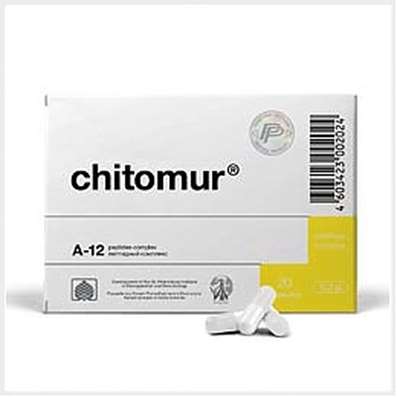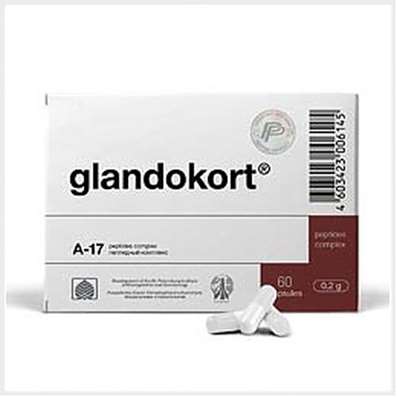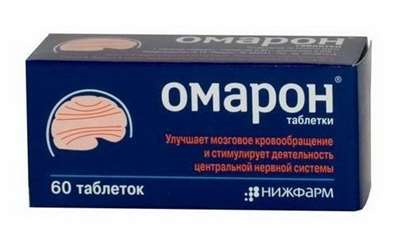Instruction for use: Cyclosporin
I want this, give me price
Dosage form: capsules; substance powder
Active substance: Cyclosporinum
ATX
L04AD01 Ciclosporin
Pharmacological group:
Immunodepressants
The nosological classification (ICD-10)
H20 Iridocyclitis: Recurrent Irritis; Sympathetic iridocyclitis; Sluggish posterior uveitis; Sluggish posterior uveitis; Posterior uveitis; Iridocyclitis of posterior segment of eye; Iridocyclitis and other uveitis; Irit; Keratoididocyclitis; Sharp Irritus; Uveitis; Cyclitis; Acute Iridocyclitis; Acute non-infectious uveitis
L20 Atopic dermatitis: Allergic diseases of the skin; Allergic skin disease noninfectious etiology; Allergic skin disease etiology nemikrobnoy; Allergic skin diseases; Allergic skin lesions; Allergic reactions on the skin; atopic dermatitis; Allergic dermatosis; Allergic diathesis; Allergic itching dermatosis; Allergic skin disease; Allergic skin irritation; allergic Dermatitis; atopic Dermatitis; allergic dermatoses; exudative diathesis; Itchy atopic eczema Itchy allergic dermatosis; Allergic skin disease; Cutaneous allergic reaction to drugs and chemicals; Cutaneous reactions to medications; Skin and allergic disease; Acute eczema; common neurodermatitis; Chronic atopic dermatitis; Exudative diathesis
L40 Psoriasis: Chronic plaque psoriasis with diffuse; generalized psoriasis; Psoriasis of the scalp; hairy parts of the skin; A generalized form of psoriasis; Psoriazoformny dermatitis; Psoriasis complicated with erythroderma; disabling psoriasis; Isolated psoriatic plaque; Eksfolliativny psoriasis; psoriatic erythroderma; Psoriasis with eczematization; Hyperkeratosis in psoriasis; Inverse psoriasis; Psoriasis ekzemopodobnye; dermatoses psoriazoformny; Psoriasis genitals; Psoriasis lesions with hairy areas of the skin; erythrodermic psoriasis; Chronic psoriasis of the scalp; Chronic psoriasis; ordinary psoriasis; refractory psoriasis; Koebner phenomenon; psoriasis
M06.9 Rheumatoid arthritis, unspecified: Rheumatoid arthritis; Pain syndrome in rheumatic diseases; Pain in rheumatoid arthritis; Inflammation in rheumatoid arthritis; Degenerative forms of rheumatoid arthritis; Children's rheumatoid arthritis; Exacerbation of rheumatoid arthritis; Acute articular rheumatism; Rheumatic arthritis; Rheumatic polyarthritis; Rheumatoid arthritis; Rheumatic polyarthritis; Rheumatoid arthritis; Rheumatoid arthritis; Rheumatoid arthritis of active course; Rheumatoid periarthritis; Rheumatoid polyarthritis; Acute rheumatoid arthritis; Acute rheumatism
M35.2 Behcet's disease: Arthritis in Behcet's disease; Uveitis Behcet; Behcet's syndrome; Turena is a big aphthous; Skin rashes with Behcet's syndrome
N03 Chronic nephritic syndrome: Glomerulonephritis chronic; Development of nephrotic syndrome; Syndrome of nephritic chronic; Chronic diffuse kidney disease; Chronic glomerulonephritis
N04 Nephrotic Syndrome: Nephroz; Edema of the kidneys; Nephrotic syndrome; Lipoid nephrosis; Nephrotic syndrome without uremia; Acute nephrotic syndrome; Edematic syndrome of renal genesis; Renal form of diabetes insipidus; Segmental glomerulosclerosis; Segmental glomerulonephritis; Focal glomerulosclerosis; Focal glomerulonephritis; Family Nephrotic Syndromes; Chronic nephrotic proteinuric syndrome; Lipiduria; Jade hereditary; Nephrotic-proteinuric syndrome
T86 Dying and rejection of transplanted organs and tissues: Transplant disease vs. host; The rejection crisis in organ and tissue transplantation; The crisis of immunological incompatibility in organ transplantation; Incompatibility of tissues; Graft rejection; Graft rejection; Rejection reactions during organ transplantation; Rejection reactions during tissue transplantation; Graft versus host response; Rejection of transplant rejection; Graft-versus-host syndrome; Fabric incompatibility
Composition and release form
1 capsule contains cyclosporine 25, 50 or 100 mg; In a contour acheikova packing 10 pcs., In a cardboard pack of 5 packages.
Pharmachologic effect
Mode of action - Immunosuppressive.
It inhibits the development of immune responses of cellular type, incl. Graft-versus-host reaction, delayed-type cutaneous hypersensitivity, allergic encephalomyelitis, Freund-adjuvanted arthritis, antibody production dependent on T-helpers. Has the ability to block the activation of lymphocytes in G0 or G1 phases of the cell cycle, the synthesis and release of cytokines, the growth of T-lymphocytes (interleukin-2). Has a selective effect and does not have a depressing effect on the hematopoiesis and phagocytic link of immunity.
Pharmacokinetics
Absorbed in the intestines. Bioavailability - 30%, increases depending on the duration of treatment and the magnitude of the dose. Cmax in plasma is achieved after 1-5 hours. The optimal concentrations of cyclosporin A in the blood are in the range from 300 to 800 ng / ml. It is distributed mainly outside the bloodstream, although it is found in erythrocytes, granulocytes, and lymphocytes. Penetrates into breast milk. T1 / 2 - 19 hours in adults and 7 hours in children. Metabolized with the formation of 15 metabolites. It is excreted mainly with bile, in the urine is found in the form of metabolites about 6% of the dose.
Indication of the drug Cyclosporin
Prevention and treatment of rejection reaction after bone marrow transplantation and transplantation of solid organs (kidney, liver, heart, cardiopulmonary graft, lung or pancreas), incl. In patients who had previously received other immunosuppressants; Prevention and treatment of the "graft versus host" reaction; Autoimmune diseases: endogenous uveitis (active, threatening vision of the middle or posterior region of the eye of non-infectious etiology with ineffectiveness of conventional therapy or development of severe side effects in treatment, uveitis of Behcet with recurrent attacks of inflammation, including retina); Nephrotic syndrome in adults and children, glucocorticoid-dependent and resistant to them, caused by the pathology of the vascular glomerulus (nephropathy of minimal changes, focal and segmental glomerulosclerosis, membranous glomerulonephritis) in order to induce remission and maintain it, and to maintain remission induced by glucocorticoids and their subsequent Cancellation; Severe forms of rheumatoid arthritis with a high degree of activity (in cases when classical slow-acting antirheumatic drugs are ineffective or their application is impossible); Severe forms of psoriasis, atopic dermatitis (with systemic therapy).
Contraindications
Hypersensitivity to cyclosporine or its constituents.
Application in pregnancy and breastfeeding
Experience with pregnant women is limited. The data obtained for patients with transplanted organs show that, in comparison with traditional methods of treatment, cyclosporine therapy does not cause an increased risk of adverse effects on the course and outcome of pregnancy. At the time of treatment should stop breastfeeding.
Side effects
From the nervous system and sense organs: a sense of fatigue, headache, paresthesia, convulsions; Rarely - muscle spasms, myopathy, tremor.
In patients after liver transplantation, signs of encephalopathy, visual impairment, consciousness, and coordination of movements were described.
On the part of the intestine: intestinal hyperplasia, loss of appetite, nausea, vomiting, diarrhea, abdominal pain, pancreatitis; Possible reversible violations of liver function, increased concentrations of bilirubin, hepatic enzymes in the blood (the severity of these disorders depends on the dose of the drug).
On the part of the genitourinary system: renal dysfunction, increased serum creatinine and urea concentration (observed during the first few weeks of treatment, are dose-dependent and decrease with dose reduction). With prolonged treatment, it is possible to develop structural changes in the kidneys (interstitial fibrosis).
From the cardiovascular system and blood (hematopoiesis, hemostasis): increased blood pressure (especially in patients after heart transplant); Anemia (mild), leuko-, thrombopenia.
Other: gynecomastia, dysmenorrhea, hirsutism, acne, hypertrichosis, gingival hypertrophy, the appearance of edema, weight gain; Hyperkalaemia, hypomagnesemia, increased uric acid concentration in the blood, rarely reversible increase in serum lipids; Development of infectious, malignant and lymphoproliferative diseases.
Interaction
With a simultaneous appointment with potassium or potassium-sparing diuretics, the risk of developing hyperkalemia increases; With aminoglycosides, amphotericin B, ciprofloxacin, melphalan, colchicine, trimethoprim, NSAIDs - the risk of developing nephrotoxicity; With lovastatin - the risk of muscle pain and weakness. Various drugs can increase or decrease plasma cyclosporine concentrations by suppressing or induction of liver enzymes involved in metabolism and elimination. Ketoconazole, macrolides (including erythromycin and josamycin), doxycycline, oral contraceptives, propafenone, CCB (including verapamil, diltiazem, nicardipine) increase the concentration of cyclosporine in plasma; Barbiturates, carbamazepine, phenytoin, metamizole sodium, rifampicin, nafcillin, sulfadimidine, trimethoprim with their iv introduction - lower. With the combined use of drugs, careful monitoring of the concentration of cyclosporine in the blood and a change in the dose of Vero-Ciclosporin should be performed. Cyclosporine lowers the clearance of prednisolone, treatment with high doses of methylprednisolone increases the concentration of cyclosporine in the blood.
Dosing and Administration
Inside, with organ transplantation - at a dose of 10-15 mg / kg 4-12 hours before surgery, then every day once for 1-2 weeks; In the future, the dose is gradually reduced to maintenance (usually 2-6 mg / kg). With autoimmune diseases, incl. Rheumatoid arthritis - 3 mg / kg in 2 divided doses for the first 6 weeks. In case of insufficient effect, the daily dose is gradually increased provided that the patient is well tolerated. The maximum daily dose is 5 mg / kg. The course of treatment - up to 12 weeks.
For maintenance therapy, the dose is selected individually, depending on the tolerability of the drug. It is possible to combine with small doses of glucocorticoids and / or NSAIDs.
In psoriasis, in order to induce a remission of 2.5 mg / kg / day in 2 divided doses, in severe cases, the initial dose of 5 mg / kg (if applied at a daily dose of 5 mg / kg for 6 weeks there is no clinical effect - The drug is canceled).
Atopic dermatitis, the initial dose of 2.5 mg / kg / day, in severe cases, is increased to 5 mg / kg / day. When a positive clinical result is achieved, the dose is gradually reduced to a complete cancellation.
Overdose
Symptoms: reversible renal dysfunction.
Treatment: symptomatic. Hemodialysis and hemoperfusion with activated charcoal are ineffective.
Precautionary measures
During treatment, systematic monitoring of kidney and liver function, potassium level in plasma (especially in patients with impaired renal function), before the beginning and after 1 month of treatment, the determination of lipid concentration is necessary. With a steady increase in the concentration of urea, creatinine, bilirubin, liver enzymes should lower the dose of the drug. With the development of hypertension, antihypertensive treatment is necessary, with increasing serum lipids - lowering the dose of the drug and / or limiting the intake of fats with diet.
It is necessary to avoid excessive suppression of immunity.
In the process of treatment, vaccination should not be carried out with live attenuated vaccines against mumps, measles, rubella, poliomyelitis.
It is not recommended simultaneous use with lovastatin, cytostatics (melphalan).
A comment
The drug is in the process of registration.
Storage conditions of the drug Cyclosporin
In dry, the dark place at a temperature of no higher than 25 ° C.
Keep out of the reach of children.
Shelf life of the drug Cyclosporin
2 years.
Do not use after the expiry date printed on the package.

 Cart
Cart





